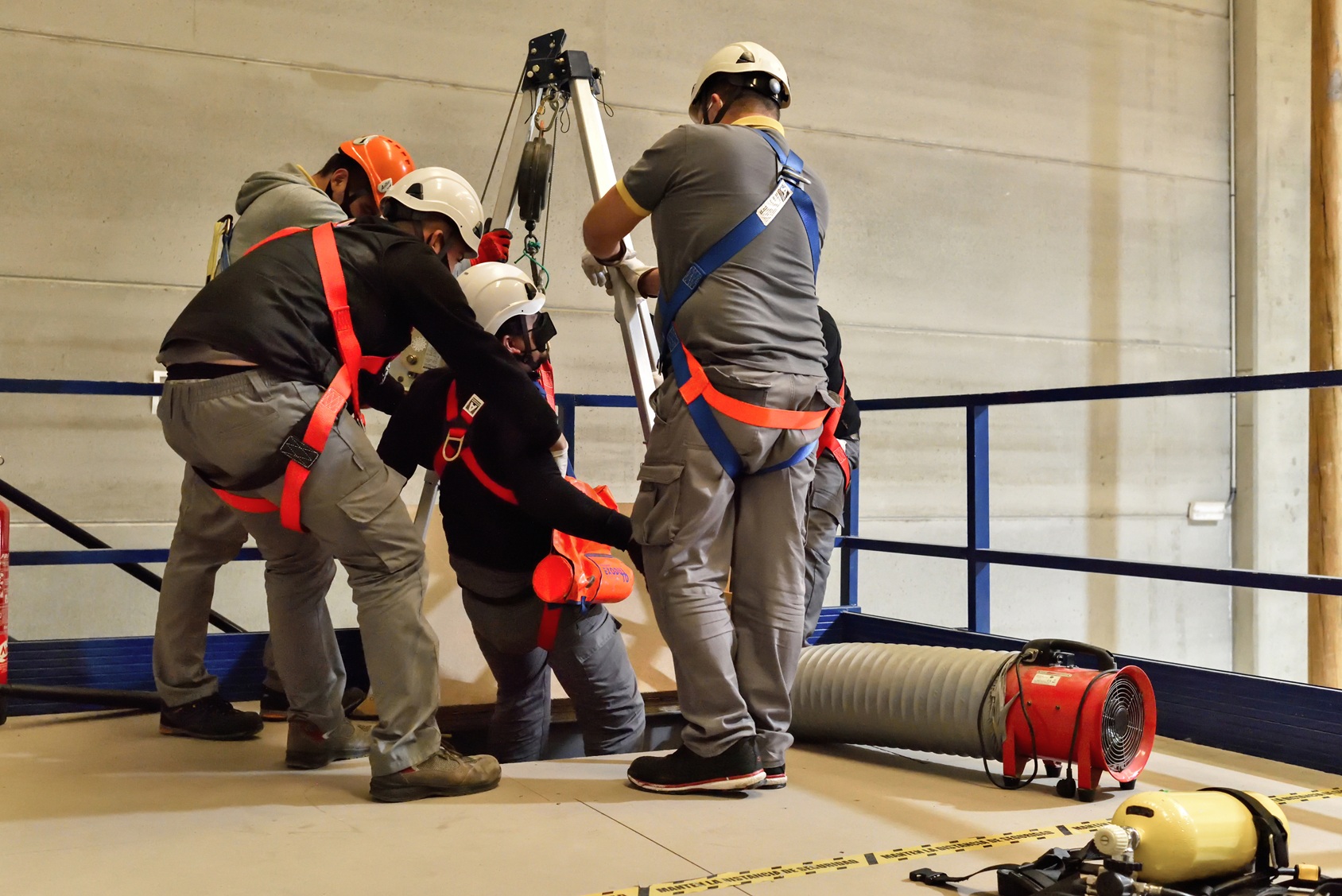What is a Permit-Required Confined Space vs. a Non-Permit One?
When it comes to workplace safety, confined spaces present significant hazards. Employers and workers need to understand the differences between Permit-Required Confined Spaces (PRCS) and Non-Permit Confined Spaces (Non-PRCS) to ensure proper safety measures are in place.
What is a Confined Space?
A confined space is an area that:
- Is large enough for an employee to enter and perform work.
- Has limited or restricted means of entry or exit.
- Is not designed for continuous occupancy.
Examples include tanks, silos, tunnels, storage bins, sewers, and manholes. However, not all confined spaces are created equal in terms of risk, which is where the permit requirement comes into play.
What is a Permit-Required Confined Space (PRCS)?
A Permit-Required Confined Space (PRCS) is a confined space that contains one or more of the following hazardous characteristics:
- Hazardous Atmosphere:
- Presence of toxic gases, flammable vapors, or an oxygen-deficient environment.
- Engulfment Hazard:
- Risk of being engulfed by liquids or flowing solids (e.g., grain, sand, or water).
- Entrapment or Asphyxiation Hazards:
- Walls that converge inward or floors that slope downward, creating a potential for workers to become trapped or suffocated.
- Other Serious Hazards:
- Electrical hazards, heat stress, moving machinery, or any other recognized health or safety threats.
Requirements for a PRCS
Because these spaces present serious risks, OSHA requires employers to follow strict entry procedures, including:
- Conducting a hazard assessment.
- Implementing a written permit system.
- Providing personal protective equipment (PPE).
- Ensuring continuous atmospheric monitoring.
- Having trained personnel, including an attendant and an emergency rescue plan in place.
What is a Non-Permit Confined Space (Non-PRCS)?
A Non-Permit Confined Space is a confined space that does not contain any of the hazardous conditions listed above. These spaces still meet the definition of a confined space but lack the additional risk factors that require a permit system.
For example, a large storage room with a single entry point might be classified as a confined space, but if it has no atmospheric hazards, entrapment risks, or other serious dangers, it would be considered a Non-Permit Confined Space.
Key Differences Between PRCS and Non-PRCS
| Feature | Permit-Required Confined Space (PRCS) | Non-Permit Confined Space (Non-PRCS) |
|---|---|---|
| Hazardous Atmosphere | Yes, possible toxic or oxygen-deficient conditions | No hazardous atmosphere |
| Engulfment Risk | Yes, potential for drowning or suffocation | No risk of engulfment |
| Entrapment Risk | Yes, sloping floors, inward walls, or other risks | No serious entrapment hazards |
| Permit Required? | Yes, due to increased hazards | No, but still requires safety awareness |
| Monitoring Needed? | Yes, continuous atmospheric testing and supervision | No, unless hazards develop |
Can a Non-Permit Space Become a PRCS?
Yes! A Non-Permit Confined Space can turn into a Permit-Required Confined Space if conditions change. For example:
- A ventilation system fails, causing oxygen levels to drop.
- A hazardous chemical is introduced into the space.
- Machinery that was previously de-energized is activated.
If a confined space’s risk level increases, it must be re-evaluated and classified as a PRCS, requiring all necessary safety precautions.
Conclusion
Understanding the difference between Permit-Required Confined Spaces (PRCS) and Non-Permit Confined Spaces (Non-PRCS) is critical for workplace safety. Employers must assess their work environments carefully, ensure proper training, and implement the necessary procedures to protect employees from potential hazards. Even when a space is classified as Non-PRCS, workers should always remain vigilant and report any changes that could introduce new risks.
By following OSHA regulations and best practices, businesses can create a safer work environment and reduce the risk of serious injuries or fatalities in confined spaces.
IMEC Technologies provides Safety Management Software to increase worker safety and aid compliance. IMEC’s Safety Management Software will manage inspections and audits, provides hazard identification, incident reporting, management of corrective and preventative actions from generation to closure. IMEC provides lock out tag out software solutions that will allow users to create lockout tagout procedures using an intuitive Mobile App and Manage Lockout Tagout Procedures, also the Review and Execution of those Lockout Tagout Procedures using the Mobile App. Annual Lockout Tagout Procedures audits are conducted using a Mobile App. The Mobile Inspection App allow users to perform inspections and audits, for example the system can be used as a Fire Extinguisher Barcode Inspection Software system to manage monthly fire extinguisher inspections and general fire safety inspections and also to record safety observations and manage corrective actions, anywhere and anytime. The solution can be used as a fire extinguisher barcode inspection software system or life safety inspection system to aid compliance in Higher Education, Healthcare, Industrial and Commercial Organizations. Benefits from a Fire Extinguisher Barcode System include the elimination of paperwork and reducing the burden of compliance with regulations such as NFPA, The Joint Commission. The Incident Reporting App allows users to easily and quickly report incidents, hazards and near-misses, these are then sent to the appropriate people for action and are managed to closure. Web Apps provide features such as, setup, management, scheduling tools, analysis, reporting and dashboards etc with the ability to report incidents to government bodies such as OSHA and RIDDOR. HazMat T&T is a hazardous waste management software solution designed for Environmental Service Companies and companies who generate a large quantity of hazardous waste. The solution tracks hazardous waste from cradle to grave aiding compliance, providing accurate waste inventory, increasing waste handling efficiency, reducing risk and also helps manage waste costs. HazMat T&T Hazardous Waste Management Software can be deployed in a number of deployment scenarios, from Large Hazardous Waste Generators, tracking their hazardous waste at their site to Environmental Service and Waste Management Companies using it track and manage hazardous waste at transfer and disposal sites. For more information visit our website www.imectechnologies.com

